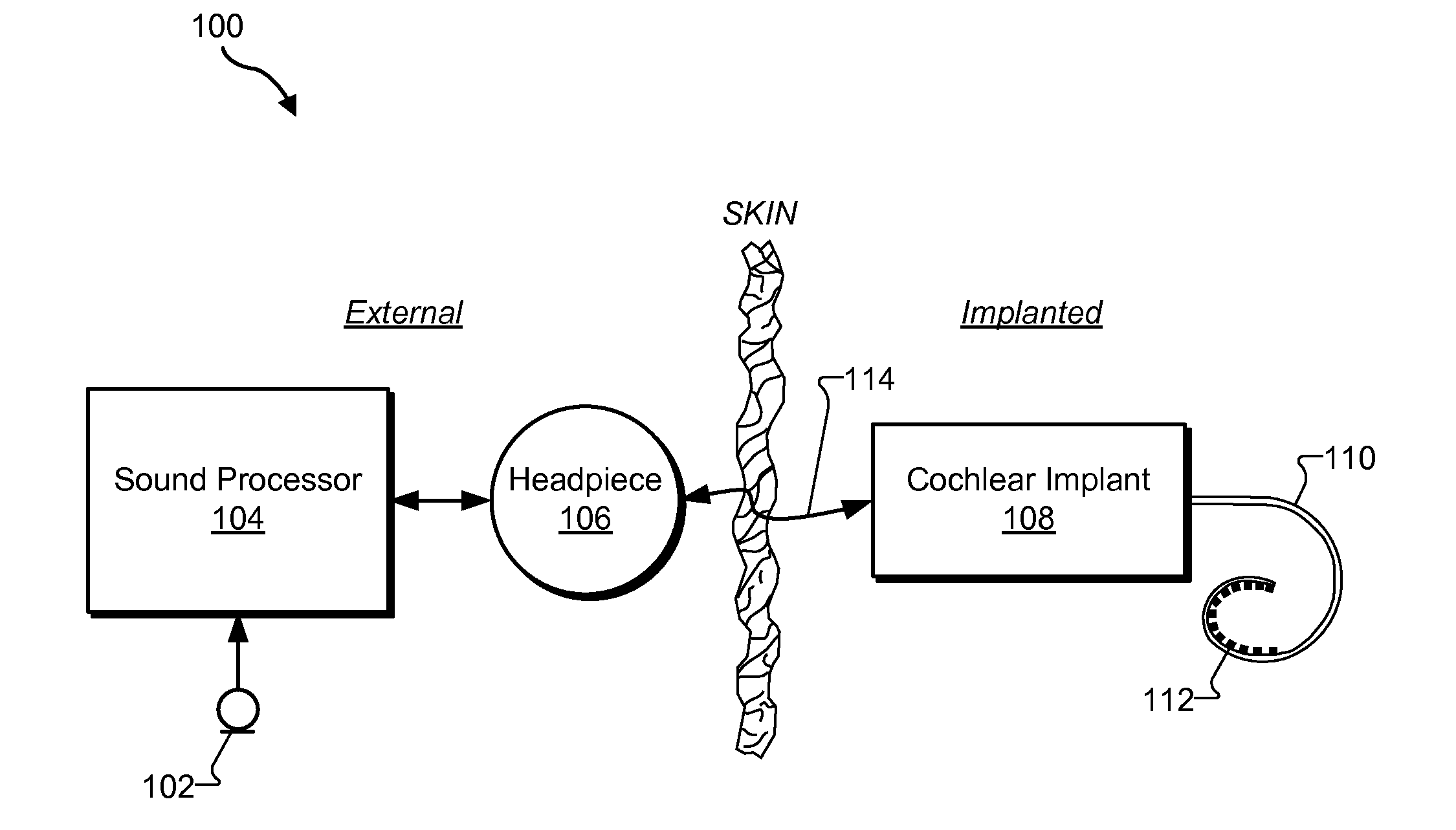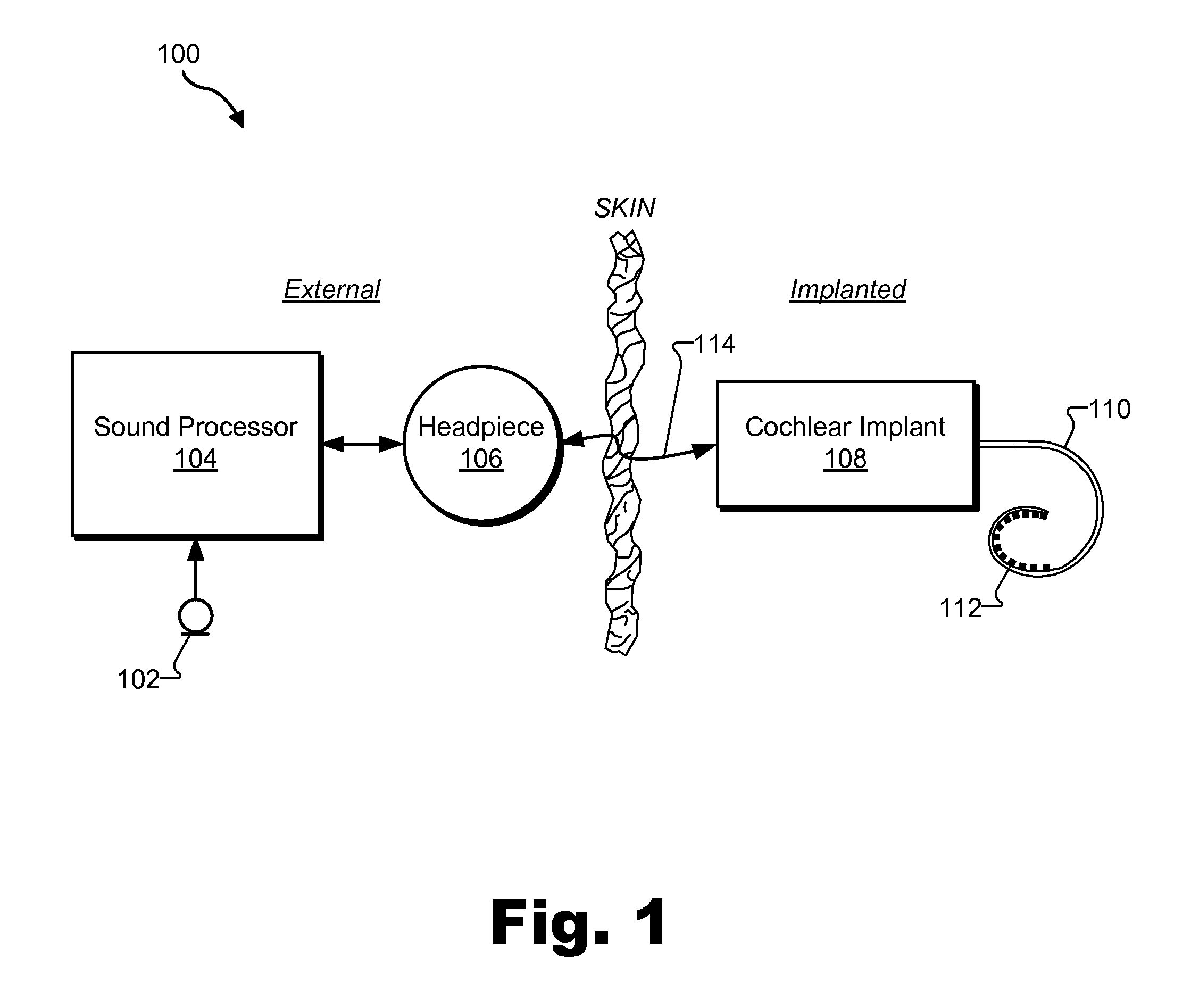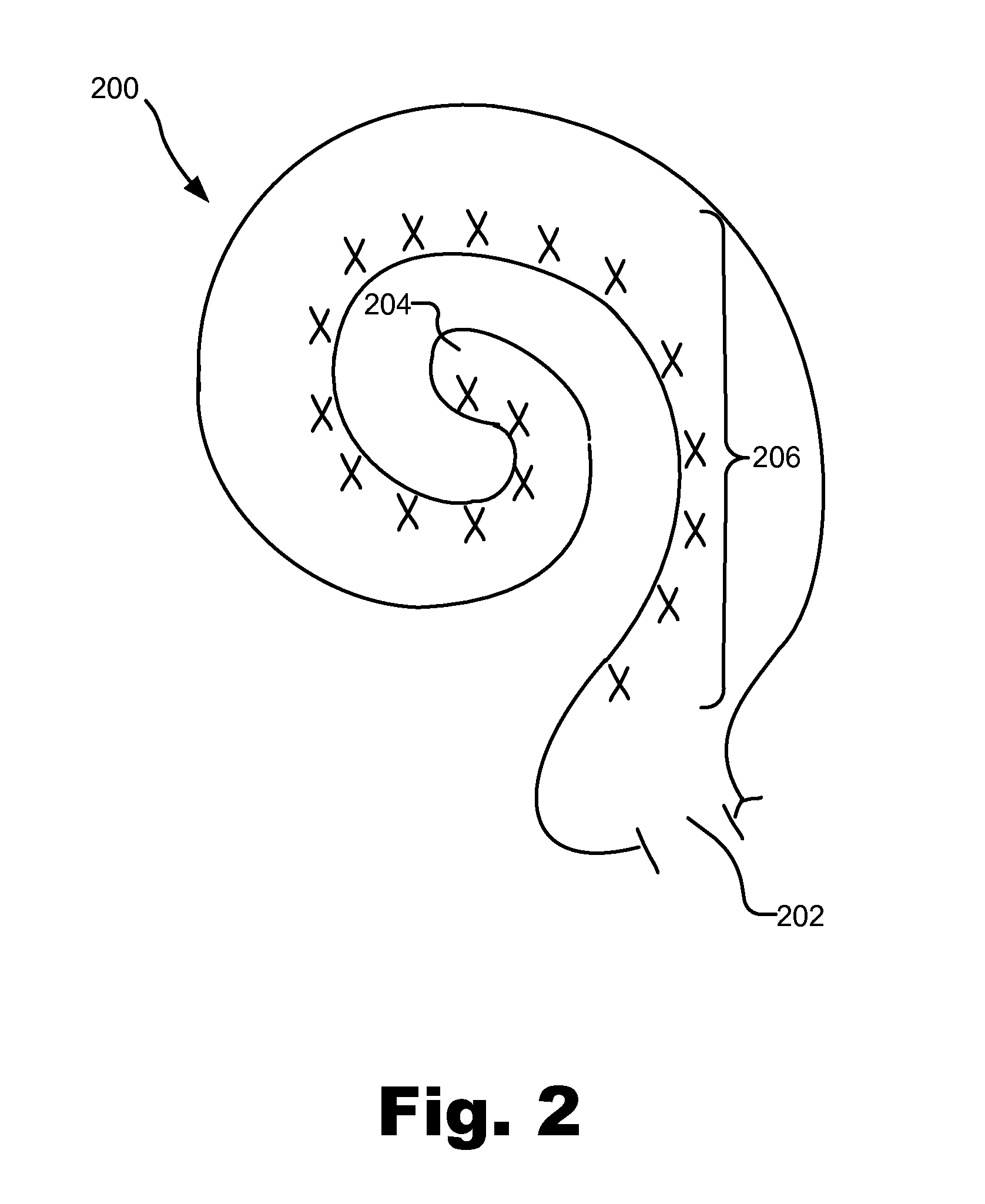Frequency-dependent focusing systems and methods for use in a cochlear implant system
a cochlear implant and focusing system technology, applied in the field of frequency-dependent focusing systems and methods for use in cochlear implant systems, can solve problems such as compromise spectral resolution
- Summary
- Abstract
- Description
- Claims
- Application Information
AI Technical Summary
Benefits of technology
Problems solved by technology
Method used
Image
Examples
Embodiment Construction
[0014]Frequency-dependent focusing systems and methods for use in a cochlear implant system are described herein. As will be described below, a sound processor included in a cochlear implant system may 1) divide an audio signal presented to a cochlear implant patient into a plurality of analysis channels each containing a frequency domain signal representative of a distinct frequency portion of the audio signal, 2) maintain data representative of a crossover frequency associated with the patient, the crossover frequency representing a boundary between a plurality of low frequency analysis channels included in the plurality of analysis channels and a plurality of high frequency analysis channels included in the plurality of analysis channels, 3) direct a cochlear implant associated with the patient to apply electrical stimulation representative of each frequency domain signal included in the plurality of low frequency analysis channels located below the crossover frequency in accorda...
PUM
 Login to View More
Login to View More Abstract
Description
Claims
Application Information
 Login to View More
Login to View More - R&D
- Intellectual Property
- Life Sciences
- Materials
- Tech Scout
- Unparalleled Data Quality
- Higher Quality Content
- 60% Fewer Hallucinations
Browse by: Latest US Patents, China's latest patents, Technical Efficacy Thesaurus, Application Domain, Technology Topic, Popular Technical Reports.
© 2025 PatSnap. All rights reserved.Legal|Privacy policy|Modern Slavery Act Transparency Statement|Sitemap|About US| Contact US: help@patsnap.com



